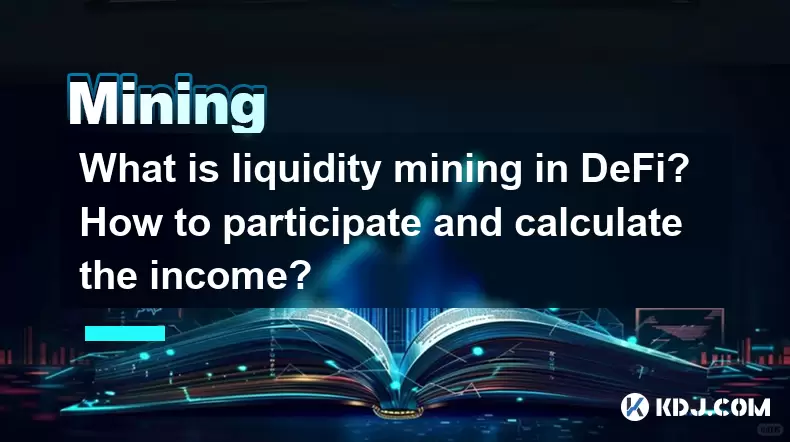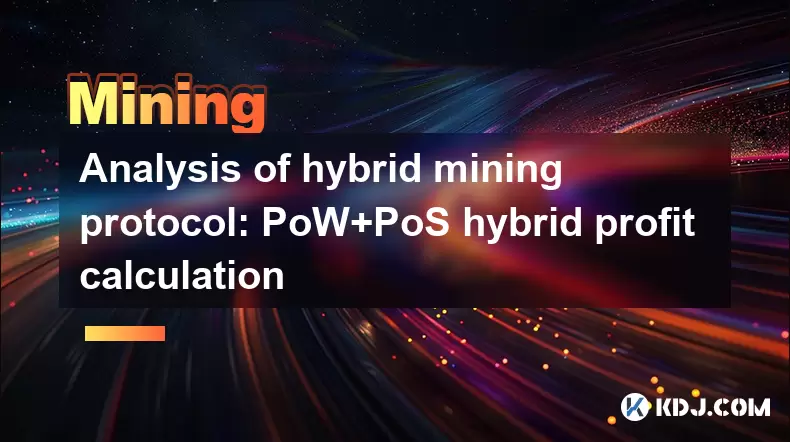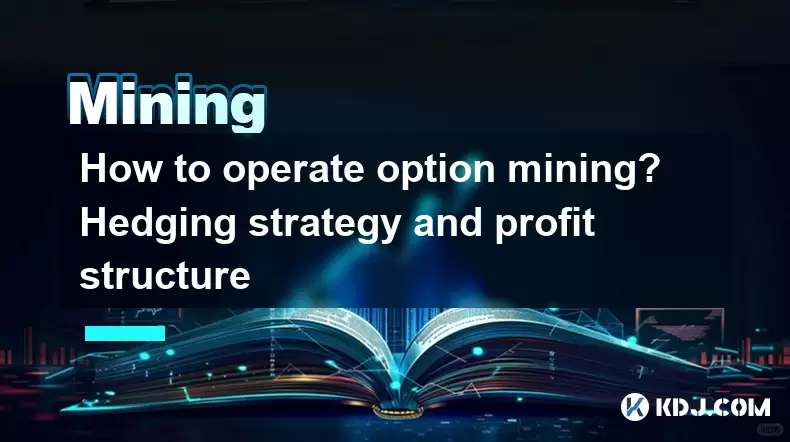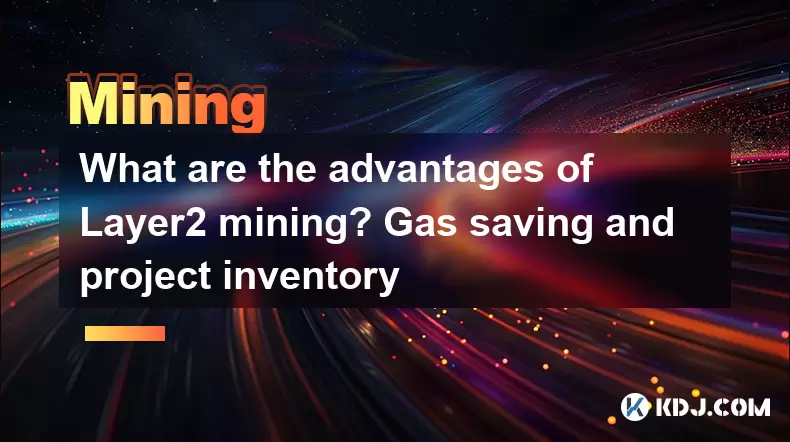-
 Bitcoin
Bitcoin $107,443.3008
-1.17% -
 Ethereum
Ethereum $2,494.2503
-0.63% -
 Tether USDt
Tether USDt $1.0003
0.00% -
 XRP
XRP $2.2496
2.23% -
 BNB
BNB $658.7569
0.63% -
 Solana
Solana $154.9826
1.94% -
 USDC
USDC $1.0000
0.01% -
 TRON
TRON $0.2799
1.07% -
 Dogecoin
Dogecoin $0.1659
-1.78% -
 Cardano
Cardano $0.5745
0.25% -
 Hyperliquid
Hyperliquid $39.7005
0.13% -
 Bitcoin Cash
Bitcoin Cash $519.5989
3.78% -
 Sui
Sui $2.7874
-2.40% -
 Chainlink
Chainlink $13.3762
-1.69% -
 UNUS SED LEO
UNUS SED LEO $9.0784
-0.64% -
 Avalanche
Avalanche $17.9846
-2.81% -
 Stellar
Stellar $0.2390
-0.06% -
 Toncoin
Toncoin $2.9028
0.25% -
 Shiba Inu
Shiba Inu $0.0...01147
-2.17% -
 Litecoin
Litecoin $86.6956
-1.27% -
 Hedera
Hedera $0.1508
-0.50% -
 Monero
Monero $322.6222
3.26% -
 Polkadot
Polkadot $3.4124
-2.99% -
 Dai
Dai $0.9999
0.00% -
 Bitget Token
Bitget Token $4.5434
-1.97% -
 Ethena USDe
Ethena USDe $1.0002
0.00% -
 Uniswap
Uniswap $7.1562
-2.61% -
 Aave
Aave $275.8830
-1.02% -
 Pepe
Pepe $0.0...09790
-4.04% -
 Pi
Pi $0.5018
-5.09%
How much electricity does Doge mining cost? How to calculate the cost and benefit of mining?
DOGE mining with an Antminer L3+ consumes 576 kWh monthly, costing $69.12 at $0.12/kWh, but only yields $1.80 in DOGE, resulting in a $67.32 net loss.
May 05, 2025 at 03:01 am

Mining Dogecoin (DOGE) has become a popular activity for many cryptocurrency enthusiasts, but it comes with significant electricity costs. Understanding how much electricity DOGE mining consumes and how to calculate the cost and benefit of mining can help miners make informed decisions. In this article, we will delve into the details of electricity consumption in DOGE mining and provide a comprehensive guide on calculating costs and benefits.
Electricity Consumption in DOGE Mining
DOGE mining requires substantial computational power, which in turn consumes a considerable amount of electricity. The exact amount of electricity used can vary depending on several factors, including the type of mining hardware, the efficiency of the equipment, and the mining difficulty.
For instance, a popular mining rig like the Antminer L3+ consumes around 800 watts of power. If you run this rig continuously, it would use 800 watts x 24 hours = 19,200 watt-hours or 19.2 kilowatt-hours (kWh) per day. Over a month, this amounts to approximately 576 kWh.
To calculate the electricity cost, you need to know the price per kWh in your area. For example, if the electricity rate is $0.12 per kWh, the monthly electricity cost for running the Antminer L3+ would be 576 kWh x $0.12 = $69.12.
Factors Affecting Electricity Consumption
Several factors can influence the electricity consumption of DOGE mining. Understanding these factors can help miners optimize their operations and reduce costs.
Type of Mining Hardware: Different mining rigs have varying levels of energy efficiency. ASIC miners, designed specifically for cryptocurrency mining, are generally more efficient than GPUs or CPUs.
Mining Difficulty: As more miners join the network, the mining difficulty increases, requiring more computational power and thus more electricity to mine the same amount of DOGE.
Cooling Systems: Mining rigs generate a lot of heat, necessitating cooling systems that also consume electricity. The efficiency of these cooling systems can impact overall electricity usage.
Operational Efficiency: The way a mining operation is managed, including downtime and maintenance, can affect the total electricity consumption.
Calculating the Cost of DOGE Mining
To accurately calculate the cost of DOGE mining, you need to consider both direct and indirect costs. Direct costs include electricity and hardware, while indirect costs may include maintenance, cooling, and other operational expenses.
Electricity Cost: As mentioned earlier, the electricity cost depends on the power consumption of your mining rig and the local electricity rate. Using the example above, if you are running an Antminer L3+ at $0.12 per kWh, the monthly electricity cost would be $69.12.
Hardware Cost: The initial investment in mining hardware is a significant cost. For instance, an Antminer L3+ might cost around $200 to $300. This cost should be amortized over the expected lifespan of the hardware.
Maintenance and Cooling: Regular maintenance and efficient cooling systems are essential for the longevity and efficiency of mining rigs. These costs can vary but should be factored into your overall cost calculation.
Calculating the Benefit of DOGE Mining
The benefit of DOGE mining is primarily derived from the DOGE coins mined and their market value. To calculate the benefit, you need to know the hash rate of your mining rig, the current DOGE mining difficulty, and the current DOGE price.
Hash Rate: The hash rate of your mining rig determines how many calculations it can perform per second. For the Antminer L3+, the hash rate is approximately 504 MH/s.
Mining Difficulty: The mining difficulty adjusts periodically to maintain a consistent block time. You can find the current DOGE mining difficulty on various blockchain explorers.
DOGE Price: The price of DOGE fluctuates, so you should use the current market price for your calculations. For example, if DOGE is trading at $0.06, this is the value you would use.
Using a mining calculator, you can input these values to estimate the daily, weekly, or monthly DOGE mined and their value. For instance, if an Antminer L3+ mines 1 DOGE per day at a price of $0.06, the daily benefit would be $0.06. Over a month, this amounts to 30 DOGE or $1.80.
Comparing Costs and Benefits
To determine the profitability of DOGE mining, you need to compare the total costs with the total benefits. Using the example above, the monthly electricity cost for an Antminer L3+ is $69.12, and the monthly benefit from mining is $1.80. This results in a net loss of $67.32 per month, not considering the initial hardware cost and other operational expenses.
However, mining profitability can vary greatly depending on the efficiency of your hardware, electricity rates, and DOGE price. Miners should continuously monitor these factors and adjust their operations accordingly to maximize profitability.
Practical Steps to Calculate DOGE Mining Costs and Benefits
Here are the practical steps you can follow to calculate the costs and benefits of DOGE mining:
Determine Your Mining Rig's Power Consumption: Check the specifications of your mining rig to find out its power consumption in watts. For example, the Antminer L3+ consumes 800 watts.
Calculate Daily and Monthly Electricity Usage: Multiply the power consumption by the number of hours in a day and month. For the Antminer L3+, this would be 800 watts x 24 hours = 19,200 watt-hours or 19.2 kWh per day and 576 kWh per month.
Find Your Local Electricity Rate: Contact your electricity provider to find out the price per kWh in your area. For example, if the rate is $0.12 per kWh, the monthly electricity cost would be 576 kWh x $0.12 = $69.12.
Calculate the Initial Hardware Cost: Determine the cost of your mining rig. For an Antminer L3+, this might be around $200 to $300.
Estimate Maintenance and Cooling Costs: Consider the costs of maintaining your mining rig and cooling it efficiently. These costs can vary but should be included in your overall cost calculation.
Determine Your Mining Rig's Hash Rate: Check the specifications of your mining rig to find out its hash rate. For the Antminer L3+, this is 504 MH/s.
Find the Current DOGE Mining Difficulty: Use a blockchain explorer to find the current DOGE mining difficulty.
Check the Current DOGE Price: Use a cryptocurrency exchange to find the current market price of DOGE. For example, if DOGE is trading at $0.06, this is the value you would use.
Use a Mining Calculator: Input your hash rate, the current DOGE mining difficulty, and the current DOGE price into a mining calculator to estimate the daily, weekly, or monthly DOGE mined and their value. For instance, if an Antminer L3+ mines 1 DOGE per day at a price of $0.06, the daily benefit would be $0.06. Over a month, this amounts to 30 DOGE or $1.80.
Compare Costs and Benefits: Subtract the total costs from the total benefits to determine the profitability of your DOGE mining operation. In the example above, the monthly electricity cost is $69.12, and the monthly benefit is $1.80, resulting in a net loss of $67.32 per month.
Frequently Asked Questions
Q: Can I reduce the electricity cost of DOGE mining?
A: Yes, you can reduce the electricity cost of DOGE mining by using more energy-efficient mining hardware, such as ASIC miners, and by optimizing your mining operation to reduce downtime and improve cooling efficiency. Additionally, choosing a location with lower electricity rates can help lower costs.
Q: How often should I calculate the costs and benefits of DOGE mining?
A: It is recommended to calculate the costs and benefits of DOGE mining regularly, at least monthly, to account for changes in mining difficulty, DOGE price, and electricity rates. This will help you stay informed about the profitability of your mining operation and make necessary adjustments.
Q: Are there any tools or software that can help with calculating DOGE mining costs and benefits?
A: Yes, there are several online mining calculators and software tools available that can help you calculate the costs and benefits of DOGE mining. Some popular options include WhatToMine, Coinwarz, and CryptoCompare. These tools allow you to input your mining rig's specifications, electricity rates, and current DOGE price to estimate profitability.
Q: Can I mine DOGE with a GPU or CPU, and how does the electricity cost compare to using an ASIC miner?
A: Yes, you can mine DOGE with a GPU or CPU, but these methods are generally less efficient and consume more electricity compared to using an ASIC miner. GPUs and CPUs have lower hash rates and higher power consumption per hash, leading to higher electricity costs. For optimal efficiency and lower electricity costs, using an ASIC miner designed specifically for cryptocurrency mining is recommended.
Disclaimer:info@kdj.com
The information provided is not trading advice. kdj.com does not assume any responsibility for any investments made based on the information provided in this article. Cryptocurrencies are highly volatile and it is highly recommended that you invest with caution after thorough research!
If you believe that the content used on this website infringes your copyright, please contact us immediately (info@kdj.com) and we will delete it promptly.
- Donald Trump, TRUMP Memecoin, and the Latest Move: A New York Perspective
- 2025-07-01 17:10:12
- Cardano, Solana, XRP: Navigating the Crypto Seas in Q3 2025
- 2025-07-01 16:30:12
- Bitcoin Holders and the Price Hold: What's the Deal?
- 2025-07-01 16:50:26
- ChatGPT, Crypto Trading, and a $100K Profit: AI's Edge in the Wild West
- 2025-07-01 16:30:12
- Mutuum Finance Presale vs. Dogecoin: A New Challenger Approaches?
- 2025-07-01 16:50:26
- Memecoins to Buy in July 2025: Riding the Hype Wave
- 2025-07-01 17:10:12
Related knowledge

What is liquidity mining in DeFi? How to participate and calculate the income?
Jun 20,2025 at 03:21pm
Understanding Liquidity Mining in DeFiLiquidity mining is a core concept in the decentralized finance (DeFi) ecosystem that allows users to earn rewards by providing liquidity to decentralized exchanges (DEXs) or lending platforms. In traditional finance, liquidity providers are usually institutional players, but DeFi democratizes this process, enabling...

What is the mining mechanism of digital currency? What hardware and cost investment are required?
Jun 23,2025 at 06:29am
Understanding the Mining Mechanism of Digital CurrencyThe mining mechanism of digital currency is a foundational process that ensures transaction validation and network security. In most Proof-of-Work (PoW) cryptocurrencies like Bitcoin, miners compete to solve complex mathematical puzzles using computational power. The first miner to find a valid solut...

Analysis of hybrid mining protocol: PoW+PoS hybrid profit calculation
Jun 23,2025 at 10:15am
Understanding Hybrid Mining ProtocolsIn the realm of blockchain technology, consensus mechanisms are pivotal in maintaining network integrity and transaction validation. A hybrid mining protocol combines two or more consensus algorithms to achieve a balance between security, decentralization, and energy efficiency. The most commonly adopted hybrid model...

How to operate option mining? Hedging strategy and profit structure
Jun 21,2025 at 03:29pm
What is Option Mining?Option mining refers to a decentralized finance (DeFi) strategy where participants provide liquidity or take specific derivative positions in options protocols to earn rewards. Unlike traditional yield farming, option mining often involves liquidity provision for options markets, allowing users to generate returns through premiums ...

What are the advantages of Layer2 mining? Gas saving and project inventory
Jun 20,2025 at 04:50am
Understanding Layer2 Mining and Its SignificanceLayer2 mining refers to the process of participating in decentralized applications or protocols that operate on top of a primary blockchain (such as Ethereum) using scaling solutions like Optimism, Arbitrum, or zkSync. Unlike traditional mining on Layer1 blockchains, which often involves high computational...

Is contract mining safe? Key points of smart auditing and vulnerability prevention
Jun 19,2025 at 08:08pm
Understanding Contract Mining in the Cryptocurrency SpaceContract mining refers to a method within blockchain ecosystems where users can participate in mining operations through smart contracts. Unlike traditional mining, which requires physical hardware and technical expertise, contract mining allows participants to invest funds into a mining pool or p...

What is liquidity mining in DeFi? How to participate and calculate the income?
Jun 20,2025 at 03:21pm
Understanding Liquidity Mining in DeFiLiquidity mining is a core concept in the decentralized finance (DeFi) ecosystem that allows users to earn rewards by providing liquidity to decentralized exchanges (DEXs) or lending platforms. In traditional finance, liquidity providers are usually institutional players, but DeFi democratizes this process, enabling...

What is the mining mechanism of digital currency? What hardware and cost investment are required?
Jun 23,2025 at 06:29am
Understanding the Mining Mechanism of Digital CurrencyThe mining mechanism of digital currency is a foundational process that ensures transaction validation and network security. In most Proof-of-Work (PoW) cryptocurrencies like Bitcoin, miners compete to solve complex mathematical puzzles using computational power. The first miner to find a valid solut...

Analysis of hybrid mining protocol: PoW+PoS hybrid profit calculation
Jun 23,2025 at 10:15am
Understanding Hybrid Mining ProtocolsIn the realm of blockchain technology, consensus mechanisms are pivotal in maintaining network integrity and transaction validation. A hybrid mining protocol combines two or more consensus algorithms to achieve a balance between security, decentralization, and energy efficiency. The most commonly adopted hybrid model...

How to operate option mining? Hedging strategy and profit structure
Jun 21,2025 at 03:29pm
What is Option Mining?Option mining refers to a decentralized finance (DeFi) strategy where participants provide liquidity or take specific derivative positions in options protocols to earn rewards. Unlike traditional yield farming, option mining often involves liquidity provision for options markets, allowing users to generate returns through premiums ...

What are the advantages of Layer2 mining? Gas saving and project inventory
Jun 20,2025 at 04:50am
Understanding Layer2 Mining and Its SignificanceLayer2 mining refers to the process of participating in decentralized applications or protocols that operate on top of a primary blockchain (such as Ethereum) using scaling solutions like Optimism, Arbitrum, or zkSync. Unlike traditional mining on Layer1 blockchains, which often involves high computational...

Is contract mining safe? Key points of smart auditing and vulnerability prevention
Jun 19,2025 at 08:08pm
Understanding Contract Mining in the Cryptocurrency SpaceContract mining refers to a method within blockchain ecosystems where users can participate in mining operations through smart contracts. Unlike traditional mining, which requires physical hardware and technical expertise, contract mining allows participants to invest funds into a mining pool or p...
See all articles

























































































